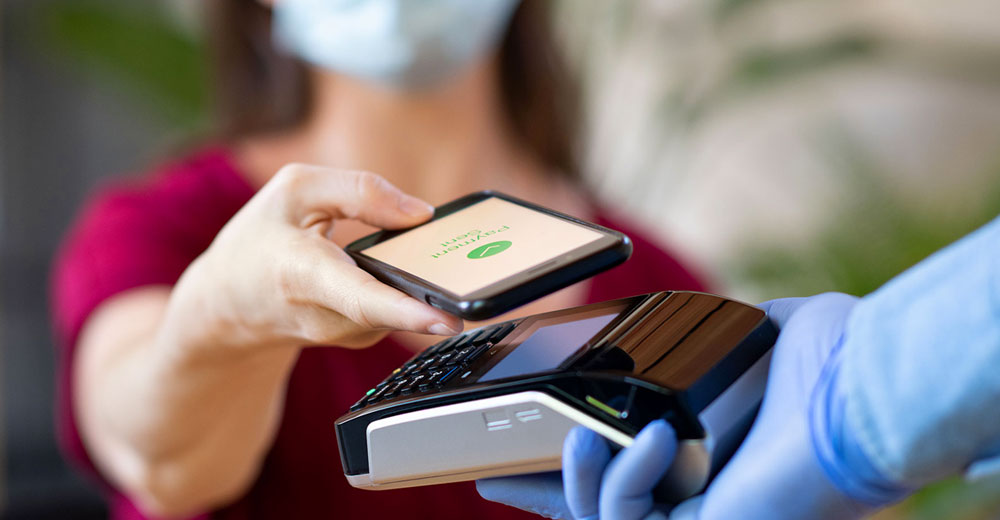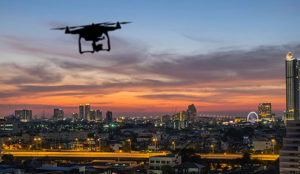Restaurants have been drastically and, in some cases, permanently changed in recent months. Many of the establishments that have survived the initial round of the pandemic have moved to take-out, delivery, or curbside-pickup models. Others have significantly altered their dining experience, ordering and payment processes.
While these changes in the restaurant industry have been in response to what is hoped to be a temporary crisis, it’s likely that dining establishments will never again operate exactly as they did before coronavirus. Those that survive and thrive will need to find ways to adapt to the new reality in which they find themselves.
“We are now seeing many parking lots being converted to outdoor dining with beautiful tents, heaters and fire pits to make the space look comfortable,” Dean Small, founder and managing partner of Synergy Restaurant Consultants, told the E-Commerce Times.
“With bars being closed in many states, operators had to readjust their thinking and how to maintain revenues by expanding their seating to more al fresco dining.”
New Models in the New Normal
Along with making changes in their physical designs to accommodate the demands of the pandemic, eateries of all sizes have also turned to new models for order taking, making deliveries, and payment processing.
“Smart operators are navigating these uncharted waters with more curbside pickup and delivery,” said Small. “In addition, many restaurants realized that their websites were not performing well to support the new surge of online ordering, so many had to make significant updates to enhance the ordering process.”
These shifts and upgrades are allowing restaurants to straddle the space between operating solely physical dining rooms and offering other forms of meal ordering, payment, and delivery.
“When shutdowns first went into effect across the country, we watched restaurants spring into action to find creative ways to drive orders when dining in was no longer an option, which meant spinning up solutions that enabled online ordering for curbside pickup or delivery,” Jennifer Sherman, senior vice president of product for NMI, explained to the E-Commerce Times.
NMI is a payments enablement technology provider, with headquarters in Schaumburg, Ill.
“Many smaller restaurants had never dealt with these applications prior to COVID-19. We’ve seen restaurants pivot their entire business model by shifting focus to online ordering and curbside pickup, or even get basic online and mobile ordering up and running for the first time,” added Sherman.
Contactless Payments
Another pandemic-related change in the restaurant world has been the move toward touchless payments. Ordering and paying in restaurants are increasingly done more seamlessly, and with less contact, than ever before. Allowing touchless payment options helps customers to feel safer in the process of dining out and can therefore making going out to eat more appealing.
“Implementing contactless payments into your existing digital strategy creates an effortless experience for your guests,” Sree Singaraju, senior vice president AI and cloud solutions for Mobiquity, told the E-Commerce Times.
“From ordering food online to payment and pick up or delivery, the whole process is touchless — a critical feature during COVID-19. Plus, customers can see exactly how much money they are spending before they complete their digital purchase; and before completing a transaction, you can show customers added costs, such as taxes, delivery fees, and service charges,” said Singaraju.
Ultimately, both restaurants and diners value the safety and ease inherent in touchless payment options.
“Now that we are starting to return to dining in, restaurants have figured out creative ways to process payments to reduce touchpoints that could spread disease and to make diners feel safe,” noted NMI’s Sherman.
“For customers that can now dine in, these new demands can be met through QR codes or contactless payments at the register or kiosk. We have seen increases in contactless card usage this season, but many of us, in the U.S. at least, still don’t have contactless-enabled cards in our wallets.
“In that case, scanning QR codes to direct consumers to pay on their phone can be used to reduce the number of physical touchpoints for customer payment and can create a modern and safe experience that diners will remember.”
Work in Progress
Restaurants — and the way people order and pay in them — will likely continue to evolve.
“As anyone who has ever walked out of an Uber can tell you, the best payment experiences are the ones that don’t exist,” Sherman continued. “All of these technologies — QR codes, contactless payments, order online for delivery or pick up — are about reducing contact and increasing velocity. The most extreme example of that is one in which we can finish our meal and simply leave.”
How restaurants and the technologies that serve them evolve depends on an intricate back-and-forth between consumers, culture, and businesses.
“I think the questions we could be asking ourselves as a technology community is, ‘How close can we get to that end goal, what solutions will it take and how can that transform the experience of dining?’
“This will impact how we think about loyalty, ordering, and even how food is served. The solutions will be about more than just software, as we watch kiosks and vending machines move upmarket,” suggested Sherman.
“Most importantly, I think that we are going to see the restaurant industry lead the rest of retail into rethinking the way we handle payments, because when it comes to making customers feel safe, entertained, engaged and comfortable, who better than the hospitality industry?”
The Future of Dining Out
Though many of the changes in the restaurant industry are likely here to stay, it doesn’t mean that restaurants won’t continue to evolve, improve, and serve an important role in people’s lives. There just might be new expectations for what restaurants are and will be.
“In six months, it will be a great time to open a restaurant,” Bob Phibbs, CEO of The Retail Doctor, a New York-based retail consultancy, told the E-Commerce Times.
“People will want to get out, and 50 percent of the existing businesses that were around a year ago will be gone. It will be a perfect time to open a new concept built around more space, digitized menus, contactless payment, and the like. If restaurants can just hold on until then, they’ll be seen as heroes and rewarded for making it through this dark time.”
























































Social Media
See all Social Media